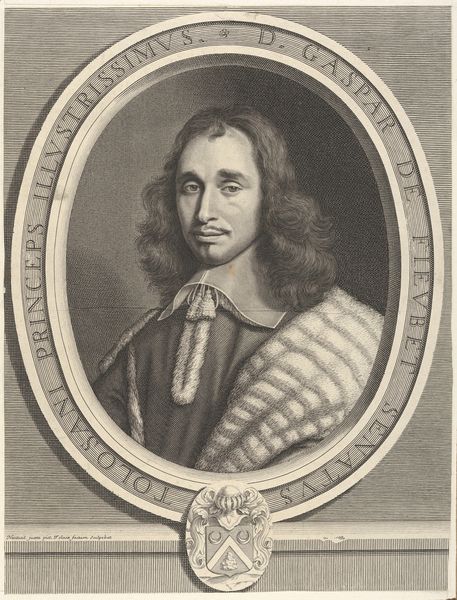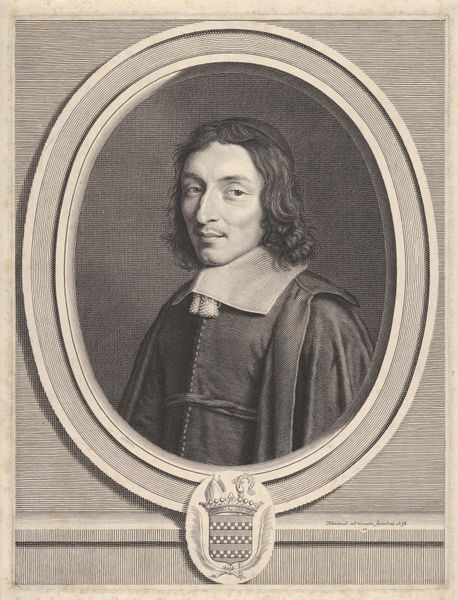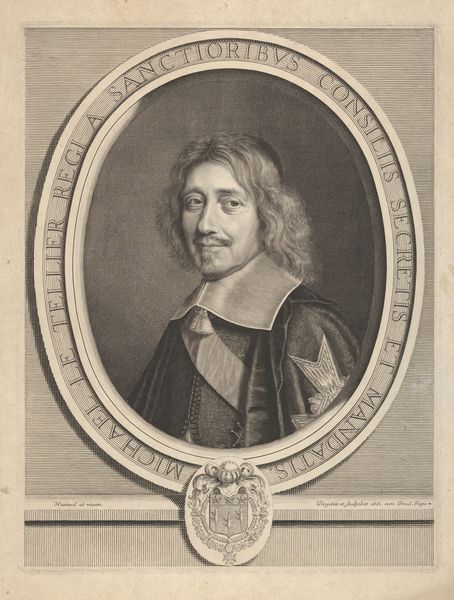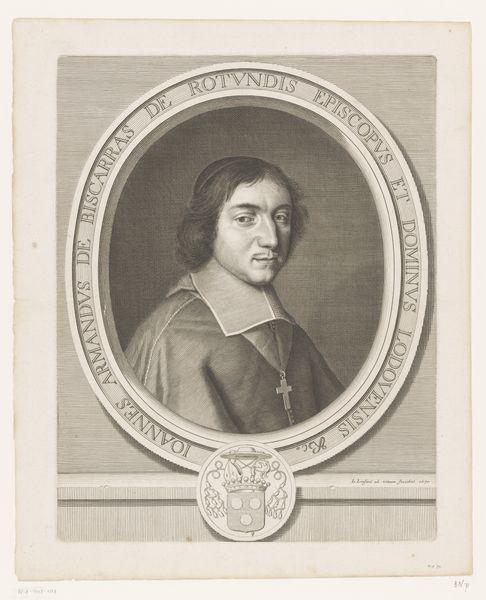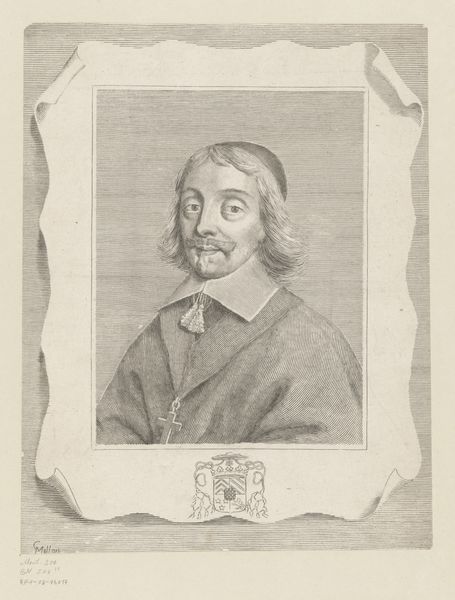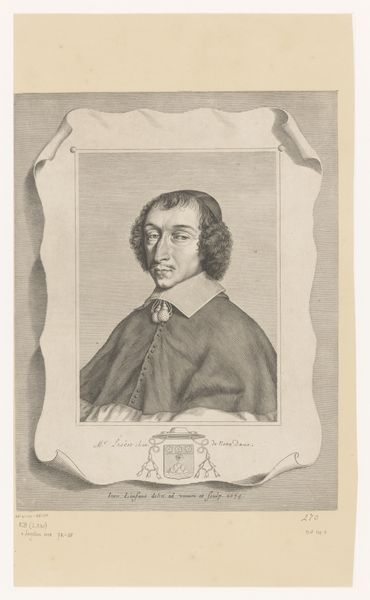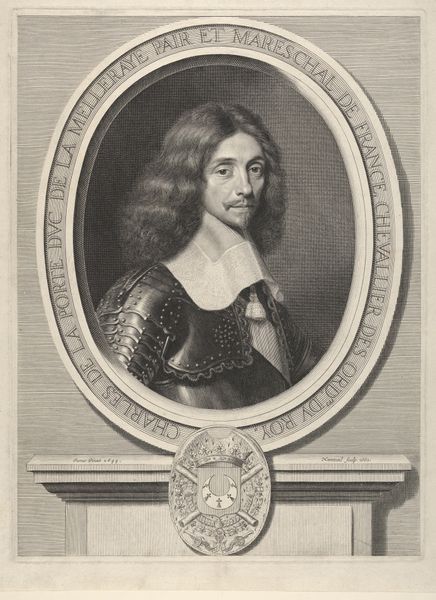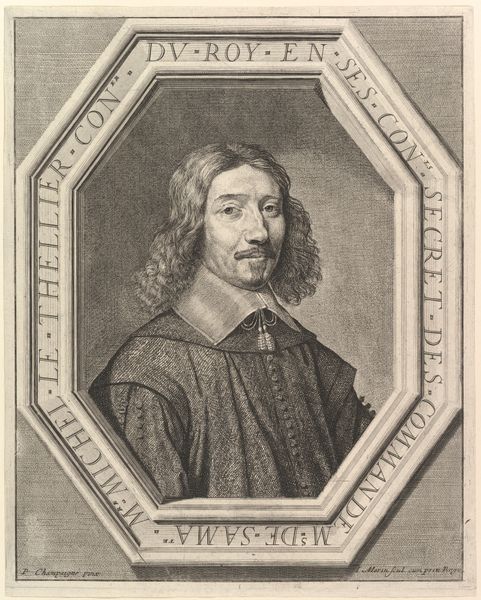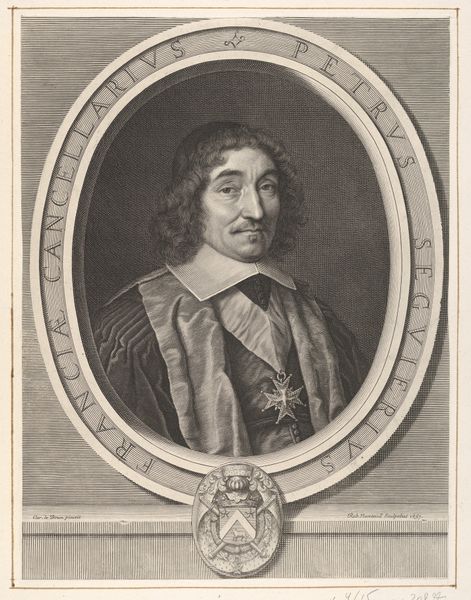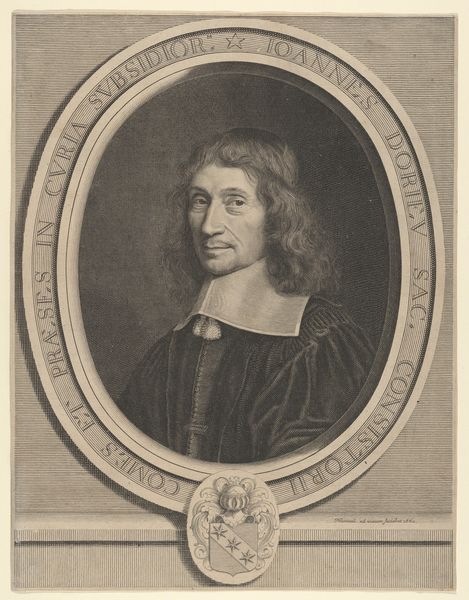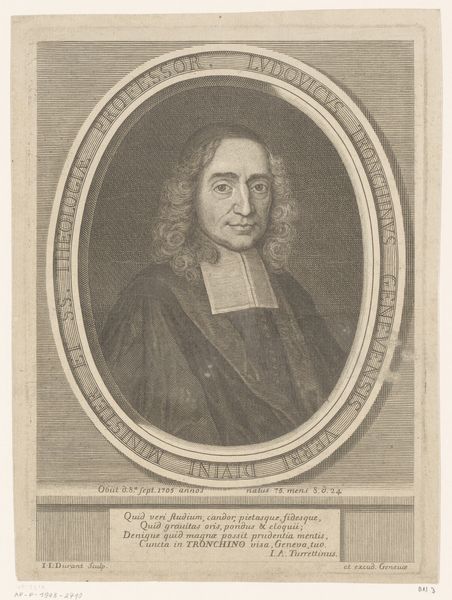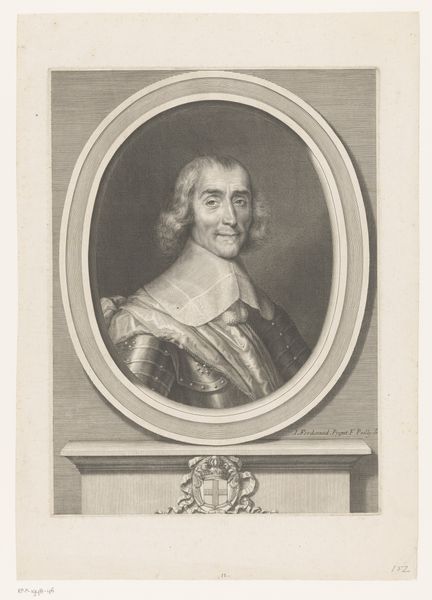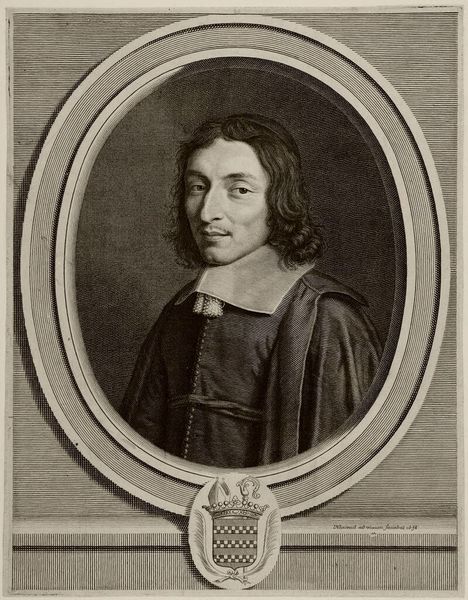
drawing, print, engraving
#
portrait
#
drawing
#
baroque
# print
#
old engraving style
#
men
#
history-painting
#
engraving
Dimensions: Sheet: 11 × 9 1/16 in. (28 × 23 cm)
Copyright: Public Domain
Curator: This is "Le cardinal de Coislin," an engraving crafted in 1661, currently residing at the Metropolitan Museum of Art. Editor: The figure feels immediately serious and restrained. The rigid lines of the engraving combined with the sitter's guarded expression create an impression of power and composure. It evokes the mood of Baroque France, where displays of hierarchy and controlled emotion were vital. Curator: Absolutely, you can almost feel the weight of expectations on his shoulders. It is believed to be a depiction of Cardinal Pierre de Coislin. Beyond his formal role, a Cardinal bore significant symbolic importance, bridging temporal authority and spiritual commitment. You also get that sense in the heraldic symbols added below. Editor: Indeed. He's presented, quite literally, in a frame within a frame, set off by the crest below, reinforcing not just who he is, but the very notion of what he signifies in a religious context. It reflects how deeply societal structures shaped individuals then, literally circumscribing their lives, but more than that, even controlling their very representation and self-image. Curator: The way he's looking out—I sense defiance, yet the precise control of line implies submission to cultural constraints of 17th-century portraiture. The engraver, Jean Lenfant, presents us with an icon of power carefully constructed. Editor: To your point about controlled power, this is interesting as an early expression of soft power. Engravings, by their very nature, allowed for the dispersal of images far and wide. Creating his simulacrum was just as important, perhaps even more, than more costly modes of art production available at the time, reinforcing the Cardinal’s presence through ubiquity. Curator: It is fascinating how printmaking democratized images even while portraying individuals who upheld rigid hierarchies. It points to art's enduring function as an echo chamber of power. Editor: Yes, it reveals a complex interplay between social constructs, power dynamics, and identity performance—made all the more intricate when preserved within an engraved image. Curator: The engraving carries both memory and promise of its culture. We should contemplate the role of images in the 21st century, their power still resounding. Editor: Right, this image echoes far beyond 17th century France, raising timeless questions about visual representation and power.
Comments
No comments
Be the first to comment and join the conversation on the ultimate creative platform.
